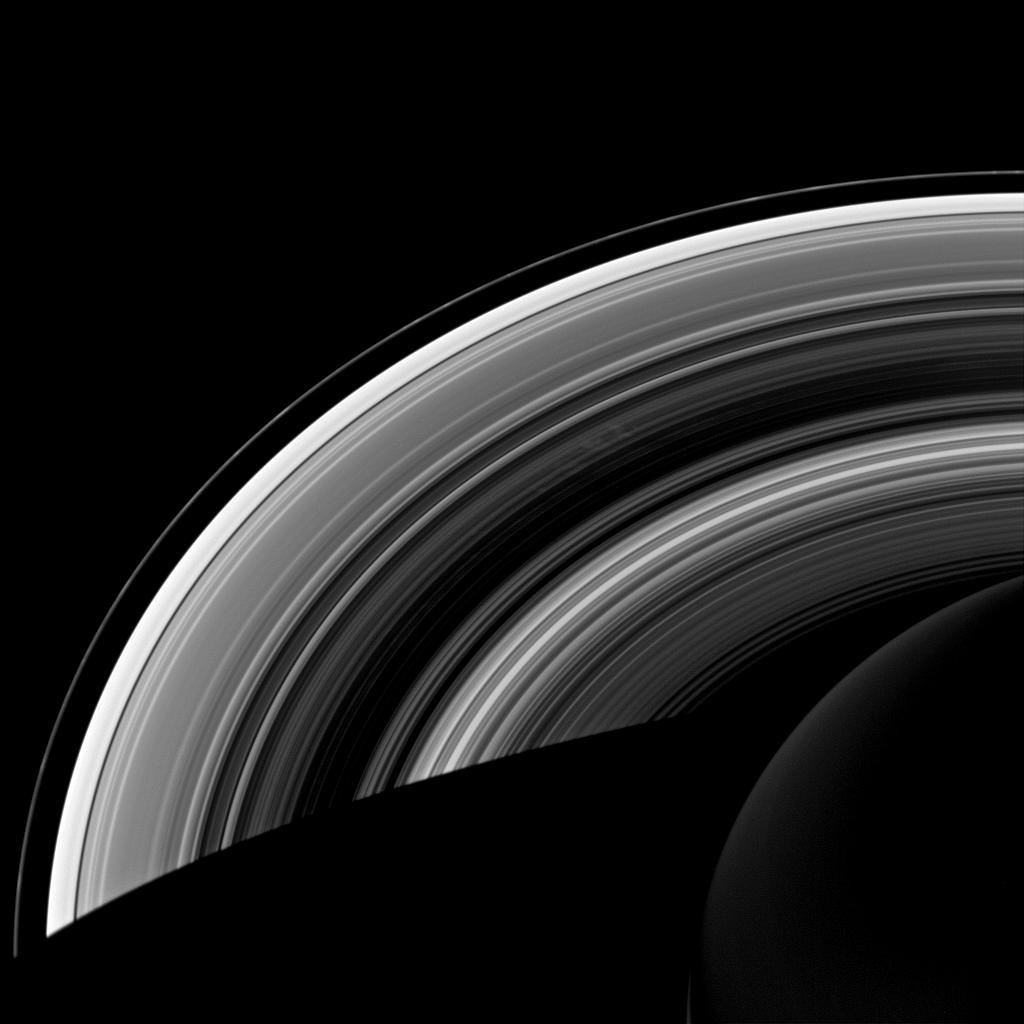Mysterious 'Spokes' in Saturn's Rings Are Still There

There are many mysteries about the enigmatic ringed gas giant, but the curious mechanism behind Saturn’s ‘spokes’ is one of the more intriguing puzzles. And in new observations from NASA’s Cassini mission, these bright features seem to be persisting in Saturn’s darkened B ring.
VIDEO: Hubble Captures Saturn’s Aurorae
Observed first during the Voyager spacecraft flybys in the early 1980′s, it was realized that these strange features, which flare out like spokes on a bicycle wheel, were not caused by gravitational interactions with the planet, moons or ring material. Further observations were made by Cassini in 2005 when it was confirmed the spokes are likely related to the gas giant’s global magnetic field.
ANALYSIS: The Mysteries Locked in Saturn’s Enigmatic Rings
The leading theory is that charged dust particles suspended above and below the rings are interacting with Saturn’s magnetic field, causing the spokes to rotate with the planet’s interior spin. They are also thought to be seasonal over Saturn’s near-30 year solar orbit — they vanish during Saturn’s midwinter and midwinter, only to reappear around the Saturnian equinox. As Saturn’s northern hemisphere approaches summer solstice, astronomers predict the spokes will disappear.
This observation was taken when Cassini was zooming approximately 1.2 million miles (1.9 million kilometers) above Saturn’s ring plane in October 2013.
For more information about this image, browse the Cassini mission site.
Get the Space.com Newsletter
Breaking space news, the latest updates on rocket launches, skywatching events and more!
This article was provided by Discovery News
Join our Space Forums to keep talking space on the latest missions, night sky and more! And if you have a news tip, correction or comment, let us know at: community@space.com.
Ian O'Neill is a media relations specialist at NASA's Jet Propulsion Laboratory (JPL) in Southern California. Prior to joining JPL, he served as editor for the Astronomical Society of the Pacific‘s Mercury magazine and Mercury Online and contributed articles to a number of other publications, including Space.com, Space.com, Live Science, HISTORY.com, Scientific American. Ian holds a Ph.D in solar physics and a master's degree in planetary and space physics.









